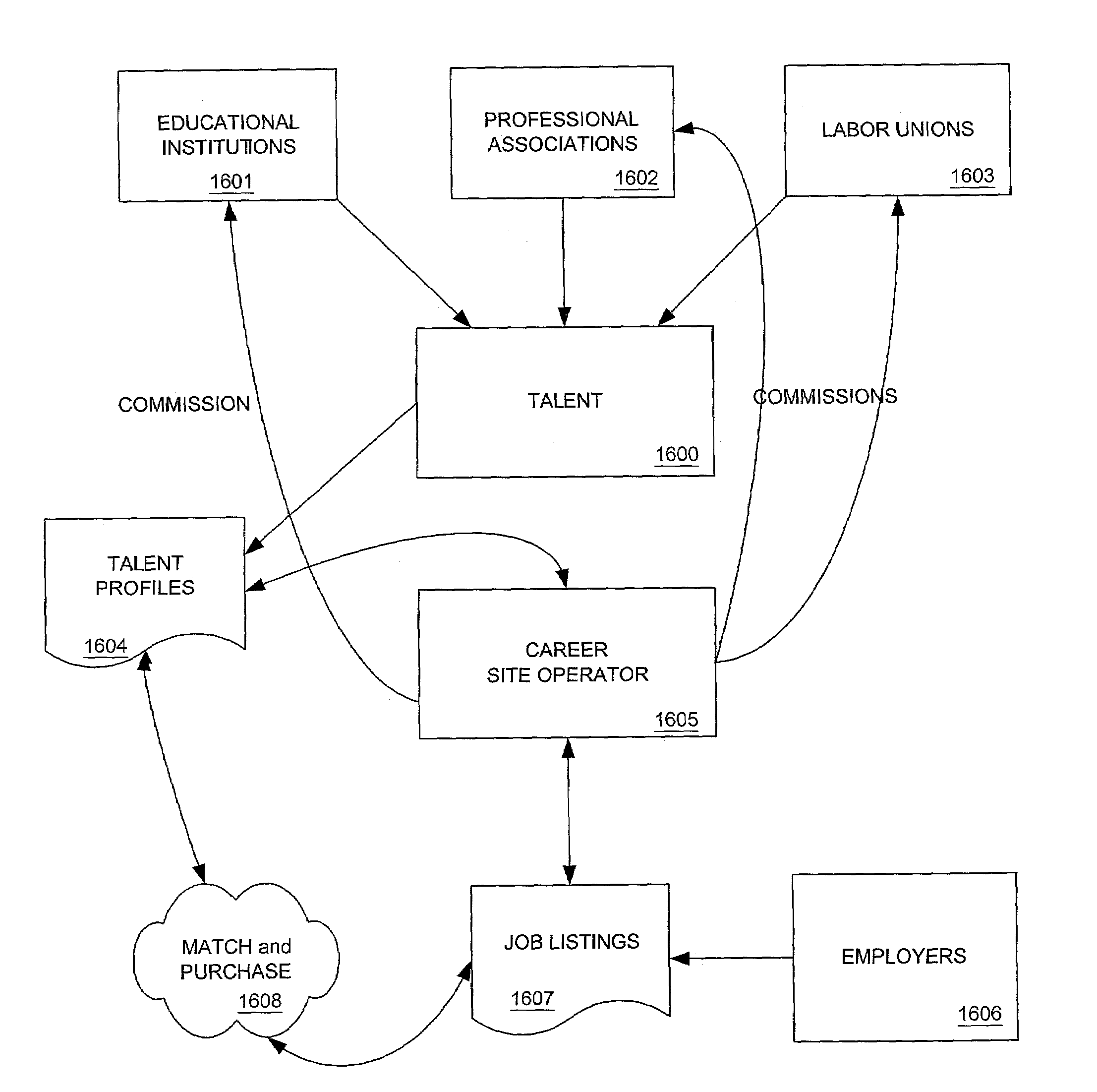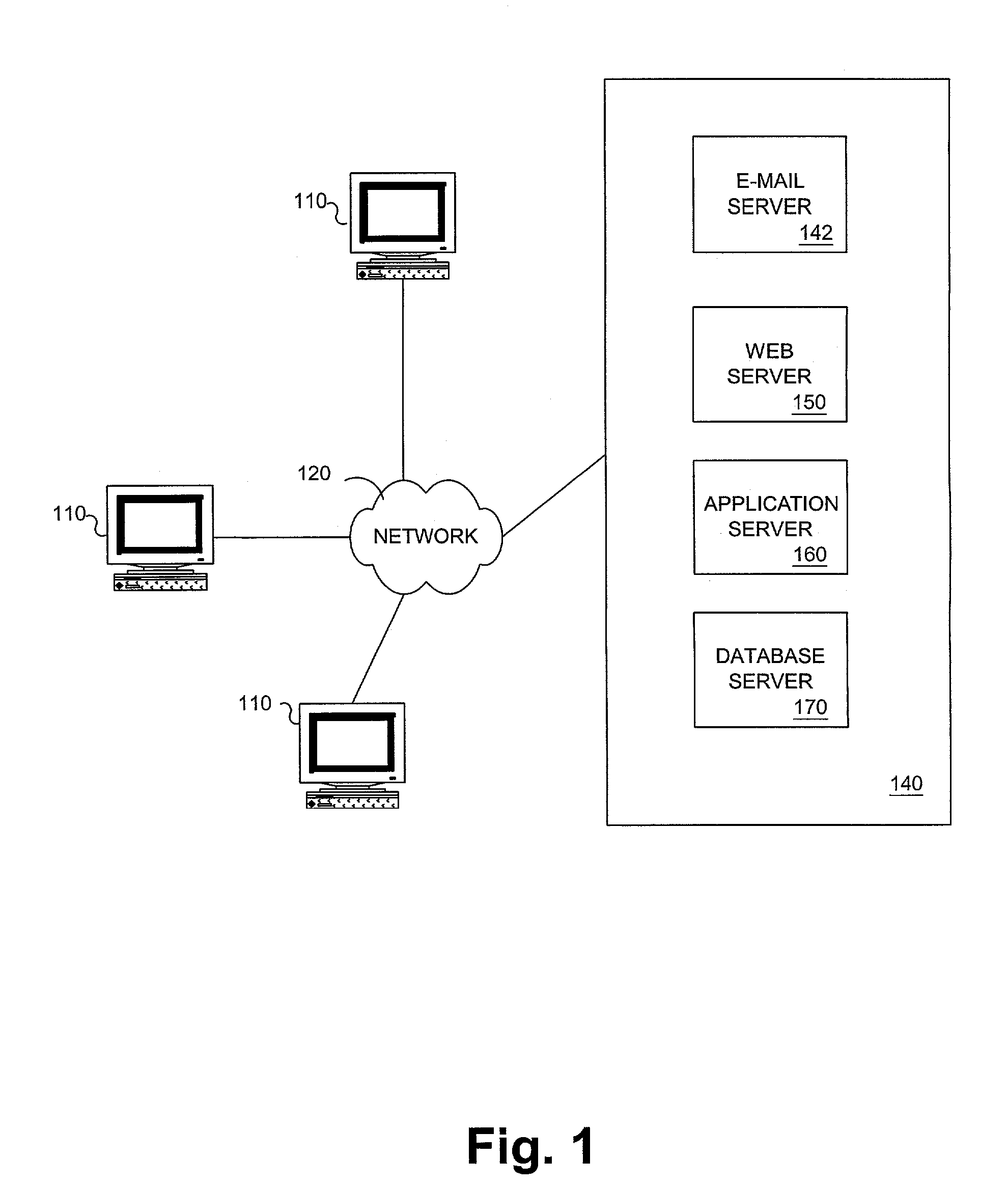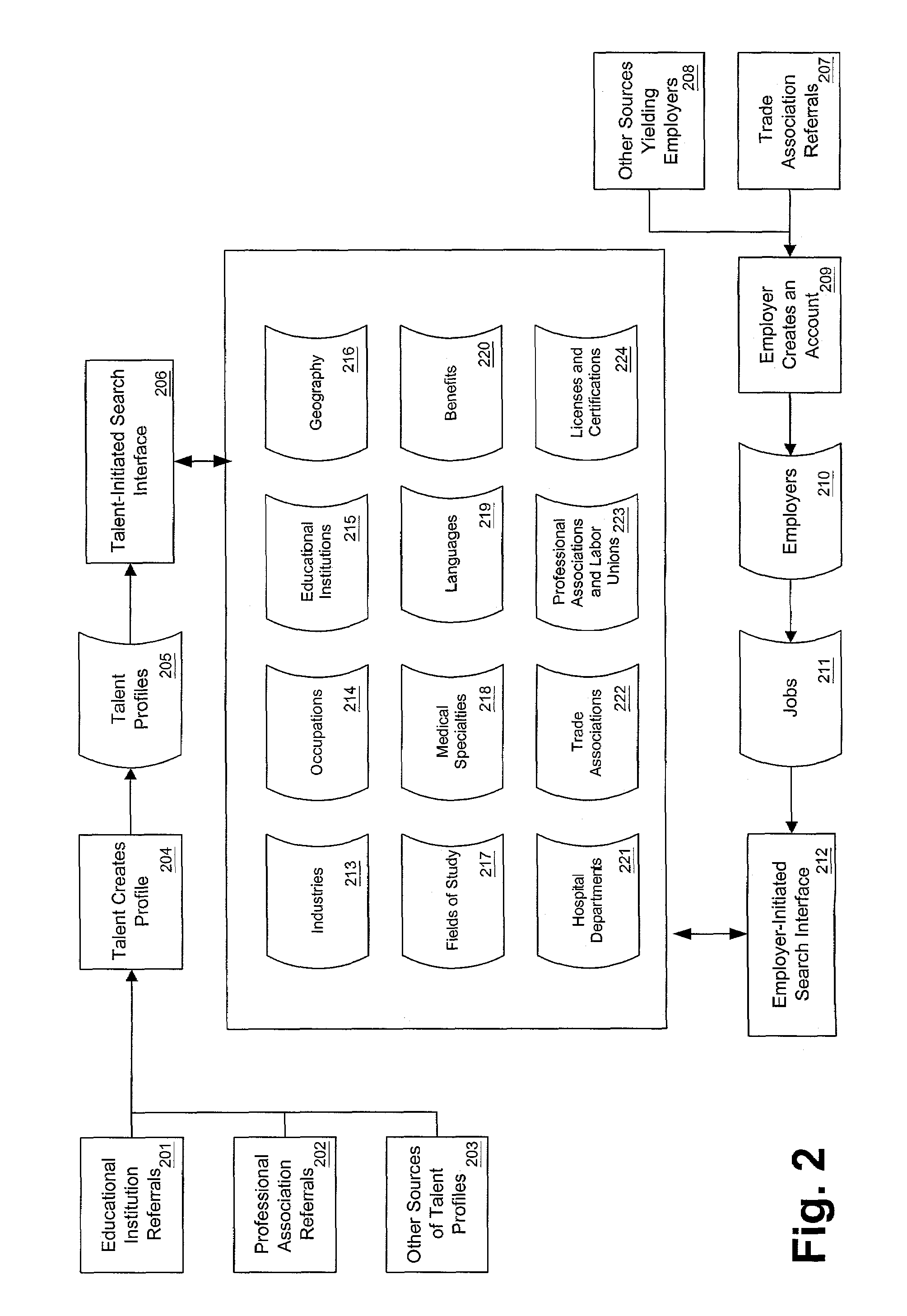Without such information, a great deal of time and expense is often expended by employers in connection with their recruiting and screening functions, while, nevertheless, achieving unacceptable results.
Each of these alternatives is inefficient, and some are costly, as well.
Furthermore, employers' articulation of the skills they seek to hire are imprecise.
When an employer seeks to hire an experienced employee, the
pool of talent, within which a search is conducted, is often limited to individuals who have already worked in a particular job within a particular industry.
Yet there exists no efficient means for identifying such individuals in other fields who may possess the precise skills sought by the employer.
Another employment problem faced by employers is that they often do not know when a particular employment position may become vacant.
Additionally, it may occur that an employee may be terminated for a reason necessitating less than two-weeks notice, and injury, illness, or death may cause an employee to become unavailable to perform his or her job function.
Further, even if a full two weeks is available to hire a replacement employee, frequently two weeks is not enough time to hire a person, particularly for skills that are in high demand.
Another problem faced by employers is that they may stop searching for more
highly skilled employee(s) than they have, if an employment position is currently filled.
Another employment problem faced by employers is that there is no uniformity among employers in how they communicate the requirements, compensation, and benefits of their employment positions to the public.
As a result, it is difficult for talent to efficiently and cost-effectively identify the
universe of employment positions for which their skills may be suited.
At the same time that employers are encountering difficulty in identifying highly qualified employees (“talent”) to fill specific employment positions, talent is struggling to find the employers and employment opportunities that best match the talent's skills and objectives.
Traditionally, talent has used the same sort of inefficient means to find employment opportunities as employers have used to find talent.
Talent has generally relied on school placement resources, replying to classified advertisements, and word-of-mouth referrals from persons who may already be employed by a particular employer, a process that is as inefficient for talent as it is for employers.
And traditionally, talent has relied on résumés to present their qualifications, yet there is no uniformity of résumés among talent.
Talent generally must “tailor” their résumés to respond to particular employment opportunities, and talent may have only a limited understanding of the skills being sought by a particular employer.
As a result, résumés are often unwieldy devices for employers to consider.
Also, it may be difficult for talent to determine which employers to target for potential employment, and which potential opportunity represents the optimal use of their skills.
Accordingly, talent can waste much time and energy trying to find the right position and may, nevertheless, fail to find an optimal position.
Furthermore, it is difficult for talent to identify an appropriate format for expressing his or her skills to an employer.
It is also difficult for talent to know what types of information to share with a prospective employer.
Even when a person is employed in a desirable position, economic or other circumstances may cause the unexpected termination of his or her employment.
Specifically, talent may be laid-off or terminated at an unanticipated time.
Even if a talent is not terminated, economic conditions may cause his or her employer to go out of business.
However, in some circumstances, there is inadequate time.
Nevertheless, on-line databases of classified ads share the same major drawbacks as printed classified ads.
First, both are highly unstructured and without uniformity of job parameters.
Second, both solicit highly unstructured résumés without uniformity from prospective job candidates.
Third, both involve the placement of advertising in exchange for an up-front
payment obligation by the employer / advertiser.
Because a cost is associated with posting a classified ad, there is an economic disincentive for employers to post jobs other than those for which there is a current (or currently expected) vacancy.
Furthermore, the classified advertising model employed by newspapers and existing on-line employment sites attracts almost exclusively jobs for which there are current (or currently expected) vacancies.
This situation is bridged at significant cost to employers by their use of headhunters who recruit currently employed persons who may be willing to change jobs for a better opportunity, but are unwilling to continuously bear the burden of the search effort.
For employers with on-going recruiting and employment problems, the inefficiencies of existing mediums of finding the best, and, in many cases, sufficient talent for a job is a serious problem that contributes to on-going operational inefficiencies.
Likewise, for talent who would like to have access to the complete picture of available jobs, the economic disincentive placed on employers to provide information about all of their jobs is a serious problem that diminishes talent's ability to optimize his or her career.
However, there is a similar economic disincentive for talent to pay for publication of a classified ad.
Further, this combined group of talent résumés is small in relation to the potential
universe of talent, and it does not provide an employer with the detailed and comprehensive information necessary for employers to select an ideal candidate.
Nevertheless, the posted jobs are essentially searchable classified ads, and the résumés posted on Monster.com are not searchable without
payment of a significant fee.
Several other on-line job sites collect information about applicants and provide this information to prospective employers in various ways; however, these systems suffer from drawbacks similar to those of the Taylor patent.
And the known on-line job advertising systems retain the significant economic limitation of being based on the newspaper employment classifieds paradigm.
Because the pay-to-post and subscribe-to-search systems impose upfront economic barriers on employers, the systems have the
disadvantage of providing a disincentive for all employers to post all of their jobs.
Further, when talent knows that only a subset of available jobs are posted and that employers are charged to search résumés, talent will not be optimally motivated to use the career site.
Therefore, while employer-owned sites avoid the economic barriers of classified advertising, they do so at another cost—the loss of broad
exposure to the available pool of prospective employees, most of whom are unaware of the employer-owned sites.
Such collector sites are mere conduits that may attract incremental attention from prospective employees, but do little, if anything, to ultimately eliminate the economic burden that is shifted to prospective employees.
That burden imposes substantial economic costs on the prospective employee due to the significant time inefficiencies entailed.
 Login to View More
Login to View More  Login to View More
Login to View More 


